Good Morning from my Robotics Lab! This is Shadow_8472, and today, I am taking a break from the regular content on my blog and doing a tutorial on this easy Cave Spider XP farm I’ve developed with a little help. More on that later. Let’s get started!
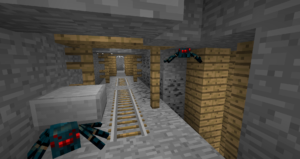
Minecraft has a small zoo’s worth of farmable mobs, but one of the most challenging is the Cave Spider. With its ability to climb any surface as if it were covered with ladders and its tiny hit box, able to slink through all but the most airtight of hastily built walls, these pests are native to abandoned mineshafts, and nowhere else. The only reason anyone might even consider a Cave Spider XP farm is because of how often multiple spawners can generate close to one another.
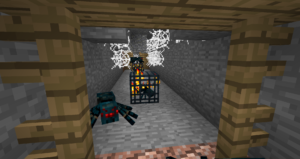 .
.
This tutorial assumes you’ve already found an abandoned mine shaft full of cave spider spawners. Once you have a bunch of spawners captured, write down or take screen shots of each spawner’s coordinates. Remember, mob spawners only activate if you are within 16 blocks, so the farthest apart two spawner blocks can be is 32. If you aren’t sure if two blocks are in range, use the Pythagorean Theorem generalized for three dimensions, √[(x1-x2)²+(y1-y2)²+(z1-z2)²].
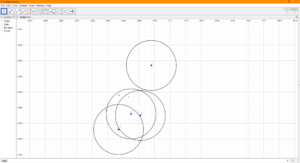
If you are looking to develop more than two spawners, which is usually the case if you are going to go for cave spiders, you’ll want to actually graph their x and z coordinates to filter out the false hopes a purely Pythagorean approach can yield. I recommend using a Geometry program like GeoGebra. Draw a 16 block radius around each spawner’s point and look for overlap. Once again, this won’t give you any hard positive results, but it will give you a fairly good idea of what to expect and how big your spawners’ overlap area is so you can start designing your grinding room.
You’re mostly on your own for the next part, since there is a plethora of possible arrangements between spawners, collection systems, and collection points, but I can give a few general tips.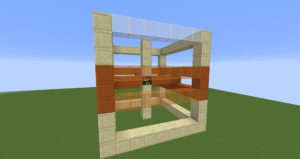
Spawners won’t spawn mobs if too many are within a 9x9x9 box of the spawner block, centered on the exact middle of the spawner block. For maximum efficiency, drop your spiders down four blocks, then at least another two and into a water collection system.
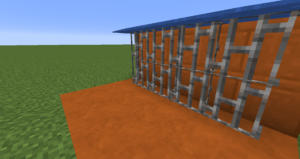
Cave Spiders’ alleged super powers end when they can’t stick to ceilings. We can exploit this by using Iron Bars, Glass Panes, or the like to make a little overhang they can’t climb past. (From here on, whenever I say, “Iron Bars,” just use the narrow block of your choice.) To keep them from climbing into a corner and building up, we can use flowing water at the top to push them off the wall.
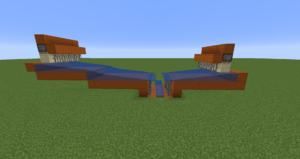
Here’s a cross section of my personal collection system. Important notes include highest part of the floor (the system need not be perfectly symmetric) is 4+2 blocks below any spawner above it, There are no water source blocks in the collection area itself, and the final water flow ends on the Iron Bars. Build the middle of the trough similarly, digging down whenever you run out of water instead of adding sources. The pistons are for a gimmicky lighting system I only recommend for those brave enough to deal with lava lighting.

My main innovation for this tutorial was this part right here. By lining the top of the transportation tunnels with top slabs (Trapdoors/Iron Trapdoors should also work and look nice), we don’t have to dig out so far to get that little tip of water to push the cave spiders back; a source and single flowing water should do. Once you are in the tunnel, feel free to use water sources whenever you drop the floor.
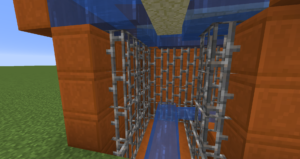
When you get to a corner, drop the waterline again and add a source block. On the upper “water rim,” be sure to use an upper slab so the spiders don’t get stuck on a quarter of an exposed block. Just carry the inner corner around the turn, but be sure you don’t accidently turn your flowing water into two lines of source blocks.

Here’s a picture of a Cave Spider grinder design from SteelToad, a colleague of mine from the server I play on. The Spider input is two wide, so I like to put a two wide soul sand bubble elevator in line with it and pipe them directly to the kill chamber.
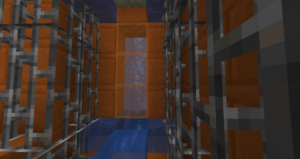
Back in the plumbing, the entrance of the elevator is only a block wide. Unfortunately, we’ll need to use a pressure plate or sign to contain the elevator water and rely on the spiders pushing against each other to move things along. While we’re at it, we can lose the bars by adding water streams from the sides to guide the cave spiders into where they belong.
A final note: If you plan on any serious AFK time, be sure to include an auto killer switch. When I built this in survival, I used pistons to change the direction the elevator sent the spiders. Other than that, add whatever you want in a Cave Spider farm. Just don’t get too close to the spiders when whacking at them, as they can still occasionally bite.
Final Question: What other design improvements would you add?

